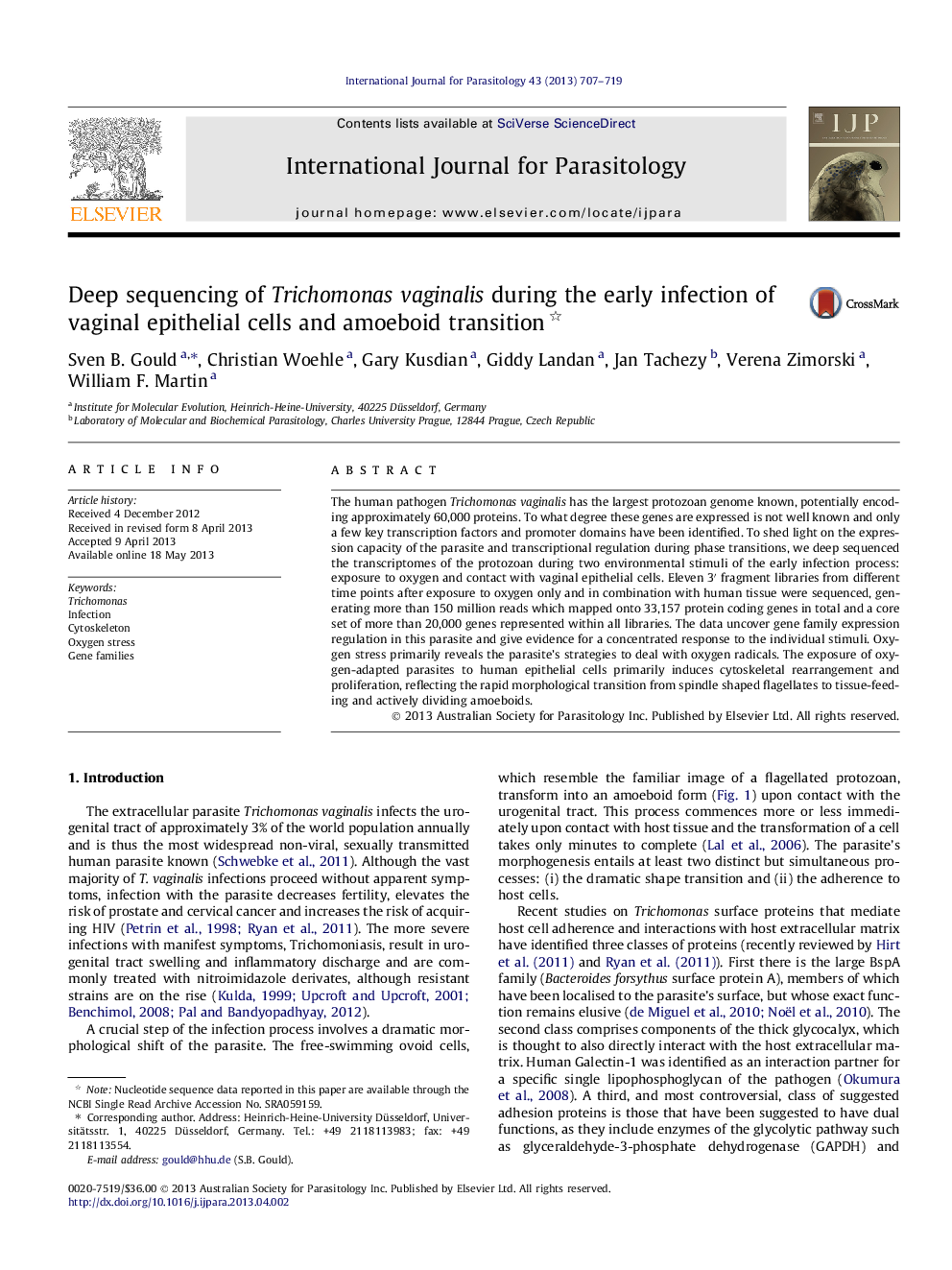| کد مقاله | کد نشریه | سال انتشار | مقاله انگلیسی | نسخه تمام متن |
|---|---|---|---|---|
| 2436064 | 1107267 | 2013 | 13 صفحه PDF | دانلود رایگان |

• Eleven transcriptomes unravel the early infection process of Trichomonas.
• 33,157 genes were found expressed, which triples the amount of expressed genes known.
• Oxygen stress masks response to human tissue and likely influenced previous interpretations.
• Host cells induce cytoskeletal rearrangement and proliferation.
• Promoter and gene family analysis helps to understand expansion and expression.
The human pathogen Trichomonas vaginalis has the largest protozoan genome known, potentially encoding approximately 60,000 proteins. To what degree these genes are expressed is not well known and only a few key transcription factors and promoter domains have been identified. To shed light on the expression capacity of the parasite and transcriptional regulation during phase transitions, we deep sequenced the transcriptomes of the protozoan during two environmental stimuli of the early infection process: exposure to oxygen and contact with vaginal epithelial cells. Eleven 3′ fragment libraries from different time points after exposure to oxygen only and in combination with human tissue were sequenced, generating more than 150 million reads which mapped onto 33,157 protein coding genes in total and a core set of more than 20,000 genes represented within all libraries. The data uncover gene family expression regulation in this parasite and give evidence for a concentrated response to the individual stimuli. Oxygen stress primarily reveals the parasite’s strategies to deal with oxygen radicals. The exposure of oxygen-adapted parasites to human epithelial cells primarily induces cytoskeletal rearrangement and proliferation, reflecting the rapid morphological transition from spindle shaped flagellates to tissue-feeding and actively dividing amoeboids.
Figure optionsDownload high-quality image (97 K)Download as PowerPoint slide
Journal: International Journal for Parasitology - Volume 43, Issue 9, August 2013, Pages 707–719